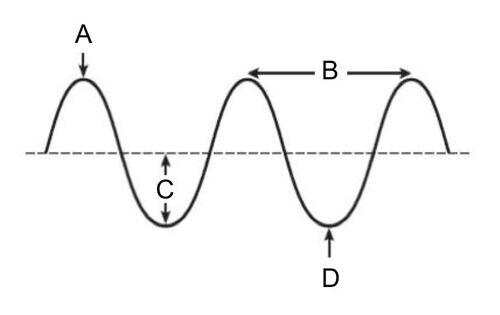Feel free to use or edit a copy
includes Teacher and Student dashboards
Measures 1 skill from
Track each student's skills and progress in your Mastery dashboards
- edit the questions
- save a copy for later
- start a class game
- automatically assign follow-up activities based on students’ scores
- assign as homework
- share a link with colleagues
- print as a bubble sheet
- Q1
Match the following letters in the picture to the correct part of the wave.
Users link answersLinking45sS8P4 - Q2
Which words correctly describe the waves at the left end of this wave spectrum?
short wavelength
long wavelength
30sS8P4 - Q3
Which words correctly describe the waves at the left end of this wave spectrum?
high frequency
low frequency
30sS8P4 - Q4
Which words correctly describe the waves at the left end of this wave spectrum?
low energy
high energy
30sS8P4 - Q5
Which answer correctly describes the wave at the right end of this wave pattern?
long wavelength
short wavelength
30sS8P4 - Q6
Which answer correctly describes the wave at the right end of this wave pattern?
low frequency
high frequency
30sS8P4 - Q7
Which answer correctly describes the wave at the right end of this wave pattern?
high energy
low energy
30sS8P4 - Q8
Using the wave spectrum in the picture, place each type of electromagnetic radiation in order starting from the left side moving to the right.
Users link answersLinking30sS8P4 - Q9
Which has a longer wavelength?
microwaves
infrared
30sS8P4 - Q10
Which has a lower frequency?
x-rays
gamma rays
30sS8P4 - Q11
Which has a higher frequency?
visible
ultraviolet
30sS8P4 - Q12
Which has more energy?
radio/tv waves
infrared
30sS8P4 - Q13
Which has more energy?
red light
green light
30sS8P4 - Q14
Which has a higher frequency?
blue light
orange light
30sS8P4 - Q15
Which has a shorter wavelength?
ultraviolet
x-rays
30sS8P4

